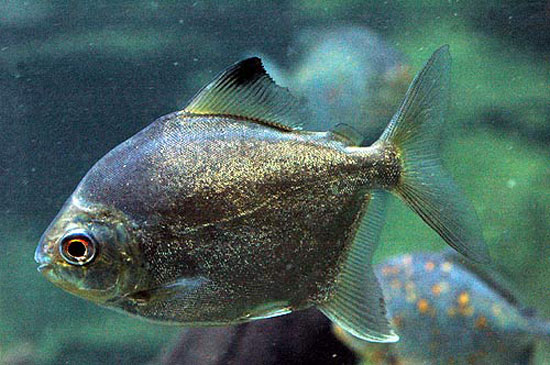| Serrasalmidae (Piranhas and pacus), subfamily: Myleinae |
| 40.7 cm TL (male/unsexed); max.weight: 5,000.0 g; max.weight: 27 kg |
|
benthopelagic; freshwater |
| South America: Amazon River basin, north and east Guiana Shield rivers. |
|
|
| Occurs along the calm banks of main rivers and also near the rapids. During the rainy season when growth is maximal, it feeds on fruits and consumes the seeds of palm trees like Euterpa oleracea, Taralea oppositifolia, Mauritia flexuosa and other plants like Inga sp. and Psidium sp. which they crush with their strong jaws. During the dry season, their diet consists more of aquatic plants like Mourea fluviatilis and Apinagia richardiana and gastropods and fish (Ref. 12225). Its flesh is excellent but it is preferable not to consume it at the end of the rainy season because then its flesh is very high in fat (Ref. 27188). |
|
Not Evaluated (N.E.) Ref. (130435)
|
| harmless |
Source and more info: www.fishbase.org. For personal, classroom, and other internal use only. Not for publication.

